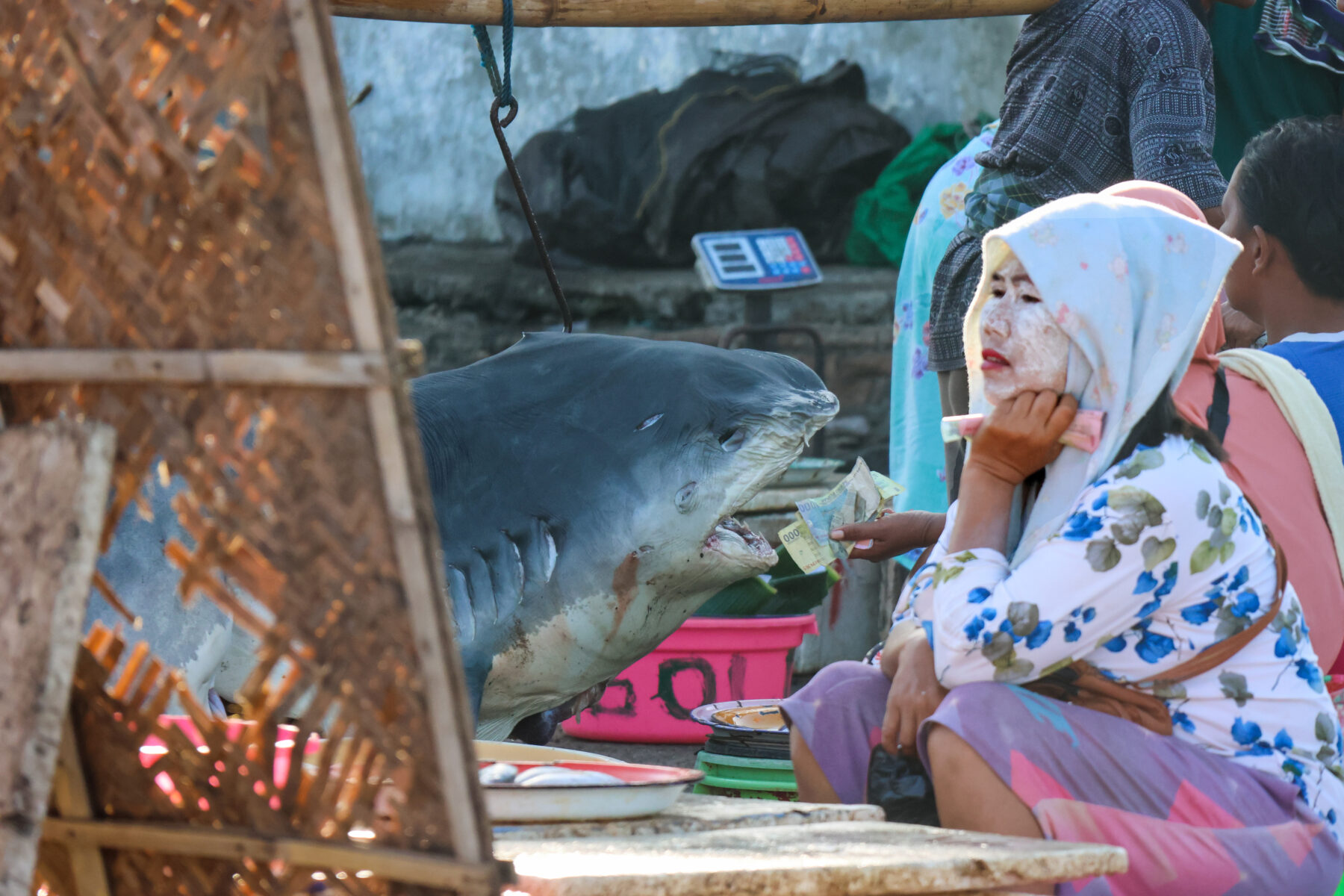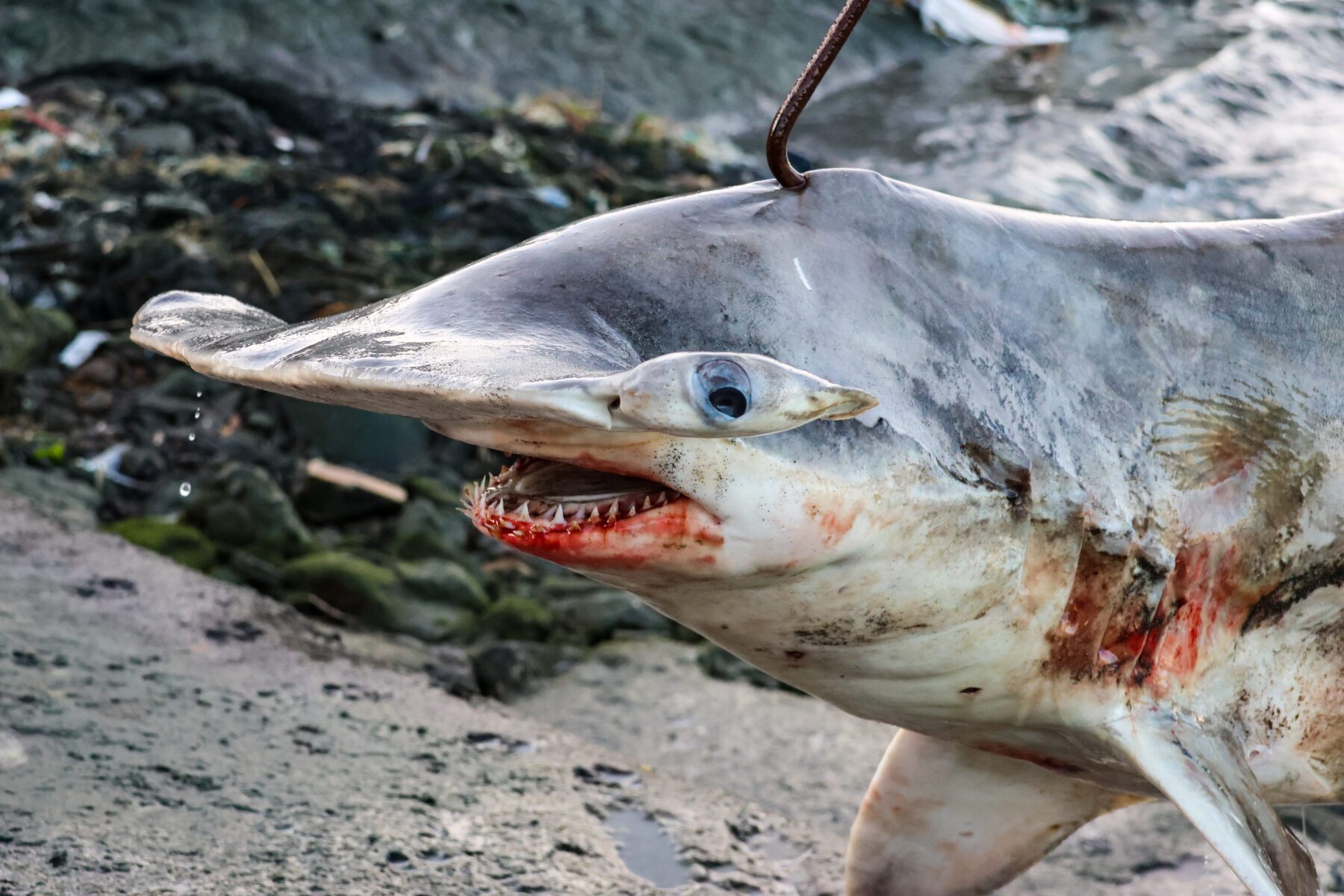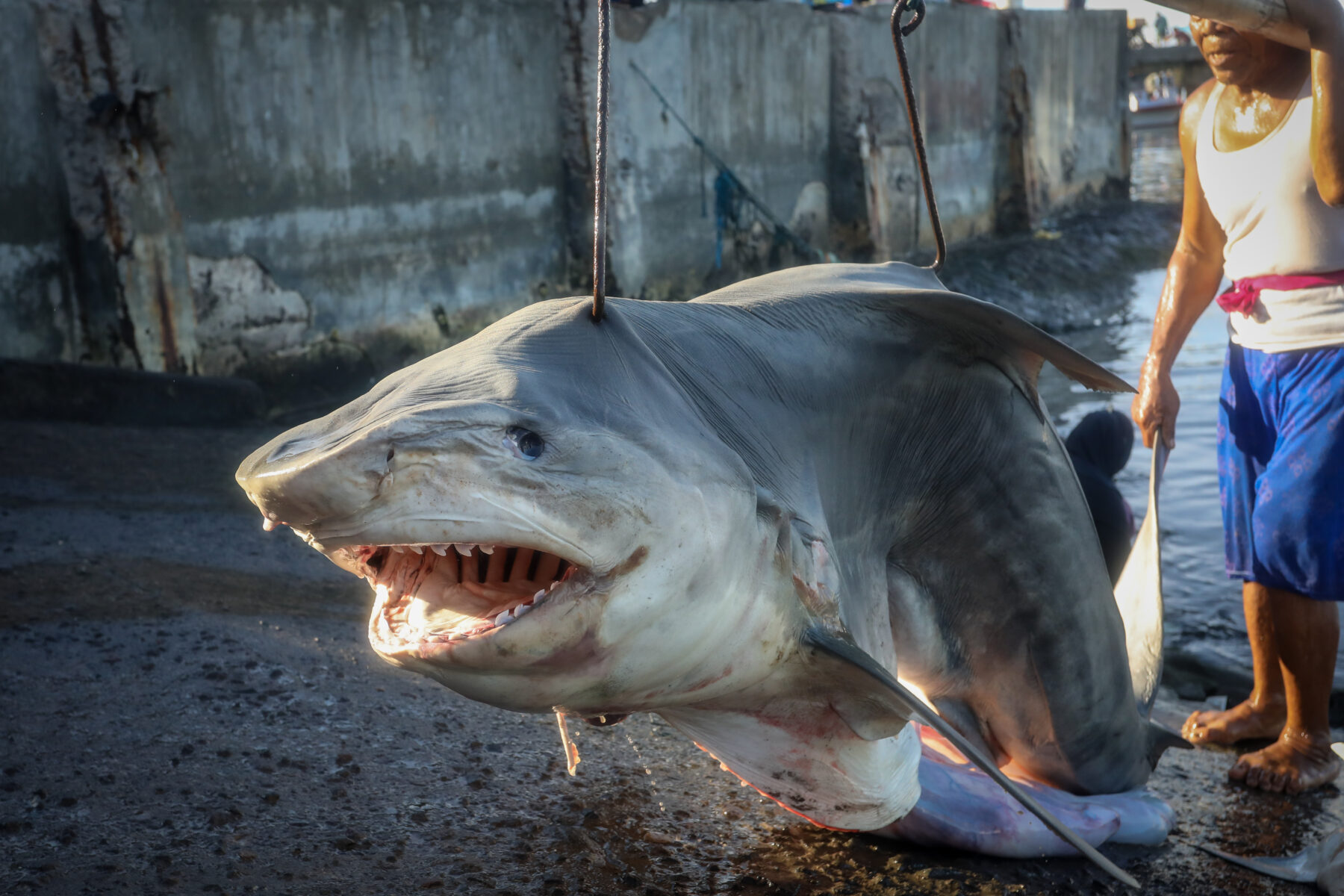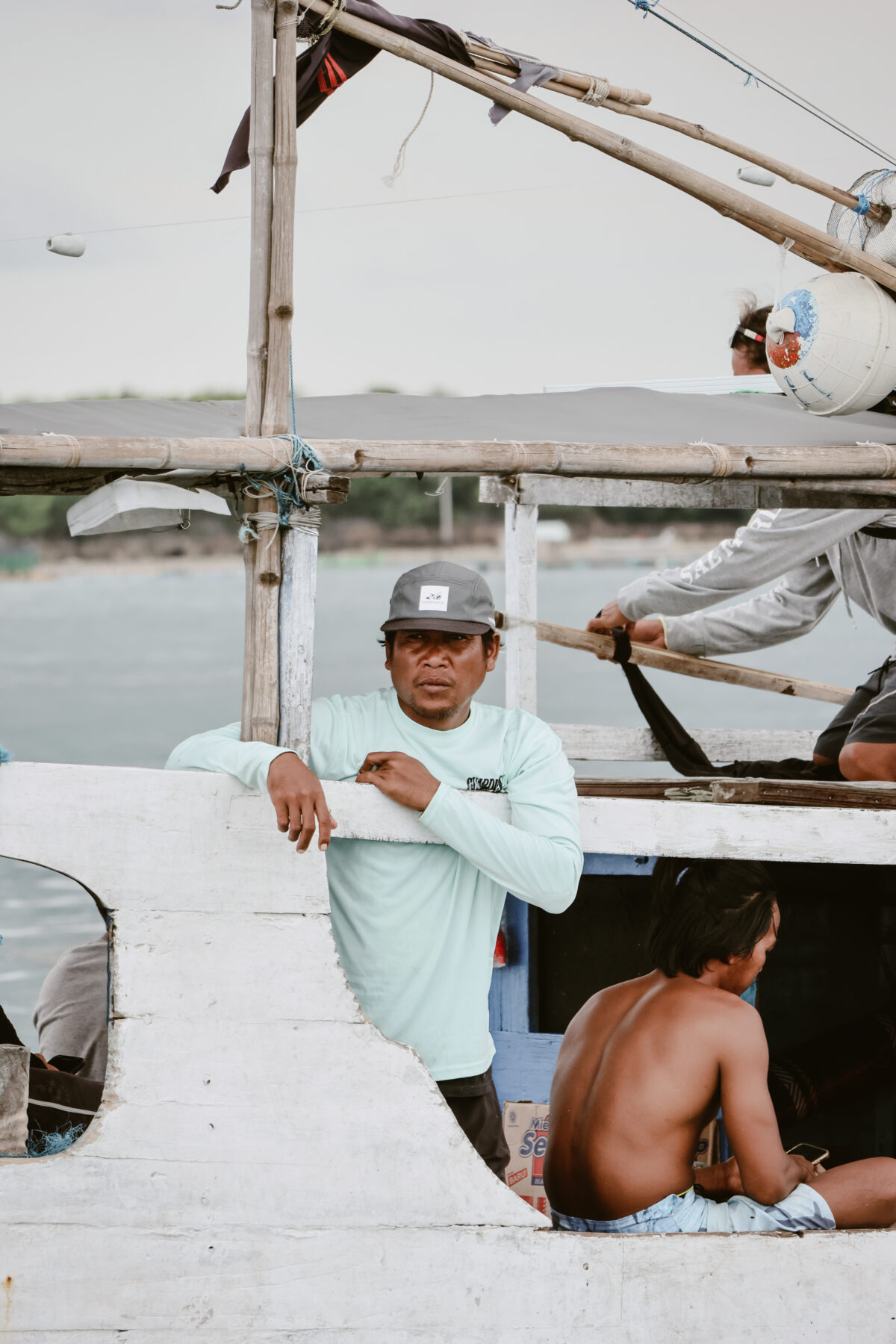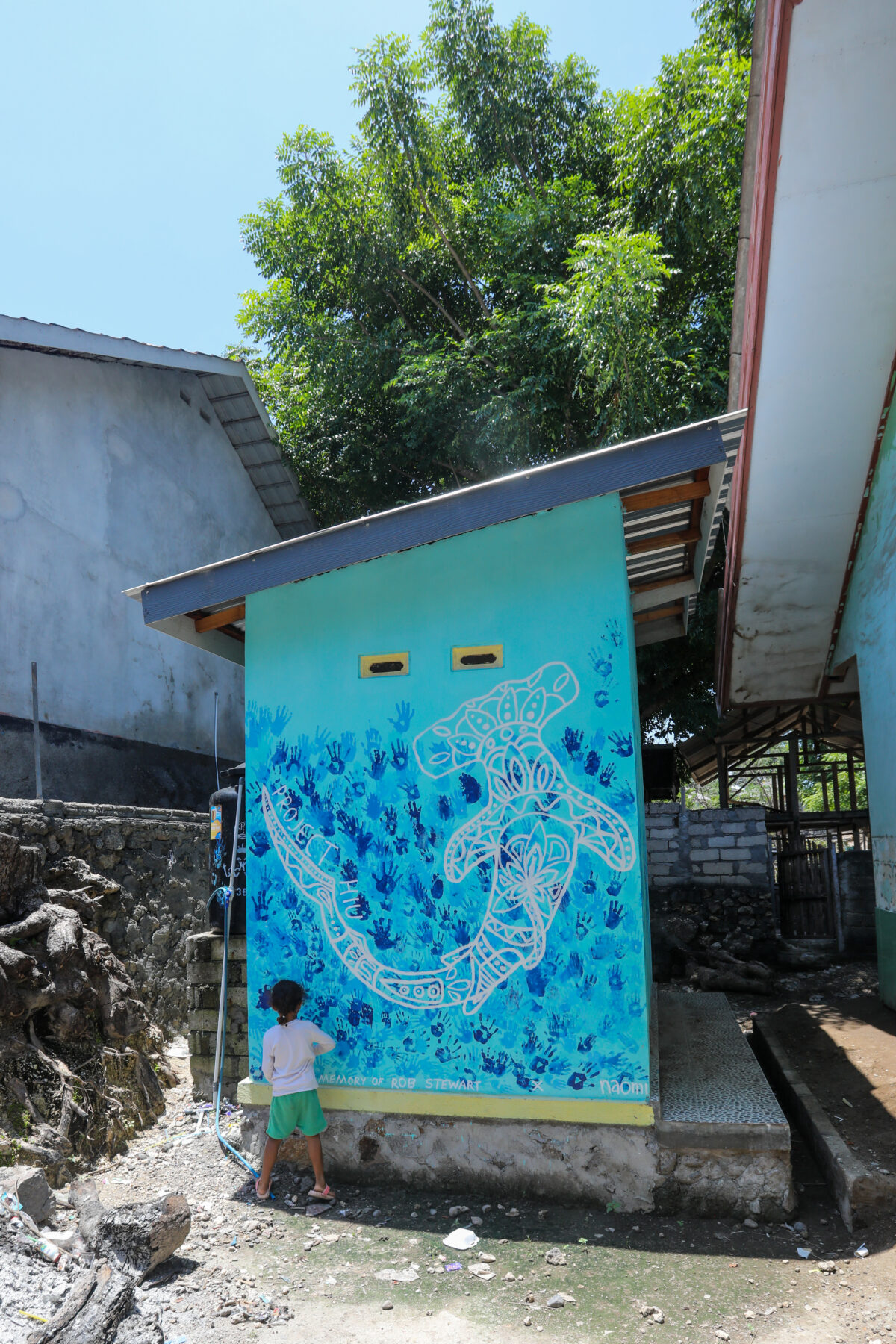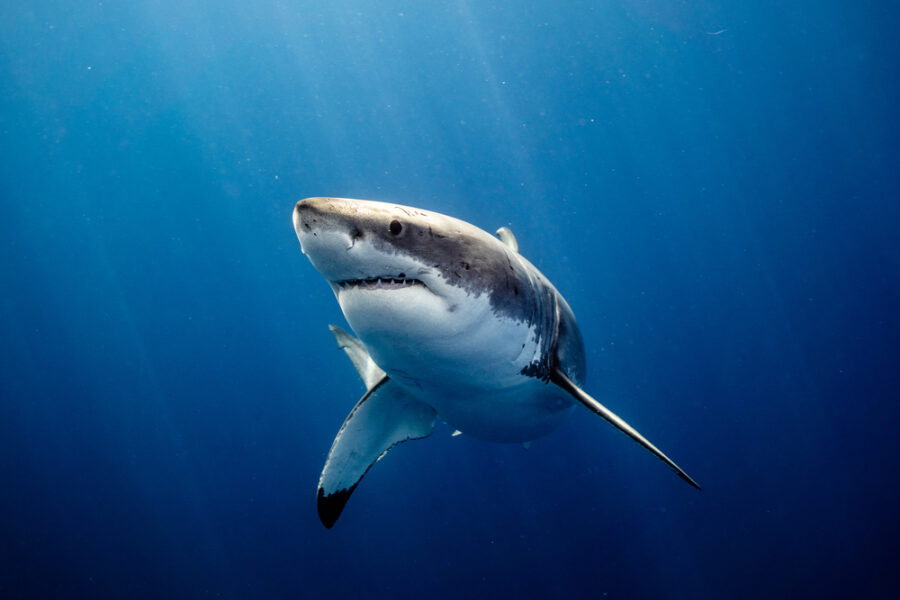I am driving along the narrow island roads of Lombok, Indonesia, heading for the fishing village of Tanjung Luar to visit one of the country’s largest seafood markets – a market renowned for its trade in sharks.
Fuelled by Asia’s insatiable desire for shark-fin soup, Indonesia is one of the world’s largest exporters of shark fin. Up to 80 per cent of the species represented in the Indonesian shark-fin trade have a conservation status of endangered, vulnerable, or near-threatened.

As soft morning light streams through palm fronds, Lombok appears to be sleeping. This quickly changes when I reach the heaving water’s edge of the Tanjung Luar fish market. Navigating through a bustling crowd pulsing with high-pitched voices, I make my way to the beach. Here, local women with clay‑painted faces wade chest‑deep into the ocean to meet jukungs (traditional fishing boats).
The women, clad in colourful hijabs, dash back and forth between the boats and the shore, rapidly offloading the night’s catch. While Indonesian women play vital roles in the country’s fishing industry, traditionally it is the men who go to sea.
The beach is a hive of activity. On the sand, hands plunge elbow-deep into buckets of tiny bait fish; piles of squid are cleaned, their dark purple ink poured back into the sea; and stingrays big and small are slapped down between stacks of cockles.
In the distance, a larger fishing boat catches my attention. Several of its crew are wrestling with the contents of a big white cooler box. Using gaffs, the men pull out an enormous hammerhead shark. They buckle and grimace under the weight of the carcass. Eventually, the shark is launched overboard and roped to a pole. Soon, the shark will be marched through the crowd to a nearby shed in readiness for auction.

I count two more hammerheads coming off the boat, as well as six tiger sharks, three shovelnose rays, and several smaller sharks. As stocks of mature sharks dwindle globally, it’s common for young sharks to be taken in large numbers. This is everyday life in Tanjung Luar.
No-one flinches as an imposing hammerhead is toted through the crowd, swaying on a pole, its eyes peering sideways. No-one pays attention as a tiger shark carcass is carried past, its stomach protruding from its mouth. No-one holds their nose to combat the stench of dissected shark – seemingly unperturbed, while I involuntarily gag.
For generations, this has been life at Tanjung Luar. It’s the way – the only way – fishing families know to generate the incomes they need to feed their children. But there is a great disparity between what local fishermen earn and the prices shark products yield at distant Asian markets. A shark sold by a fisherman at this fish market for $50 can fetch up to $1000 for 500g on the streets of Hong Kong.
When young Gold Coast film presenter Madison (Madi) Stewart visited Tanjung Luar in 2017 to film parts of the documentary Blue, a marine conservation film that highlights issues affecting the health of the world’s oceans, she was angered by Indonesia’s shark fishermen.
“I first came here to Lombok and Tanjung Luar to film how bad these fishermen are. I travelled to this market to expose the shark trade and the men at its heart,” says Madi, a conservationist and activist who has dedicated her life to protecting sharks.
After the release of Blue, Madi returned to Tanjung Luar to further explore the Indonesian shark-fishing trade.
“When I returned on my own, I wanted to talk again to those fishermen who were killing sharks. I don’t even know what I had in mind – I was naive,” she says. “I found the first captain who would talk to me and offered him money to take me out on his shark boat.” That fisherman was Odi Pratama, a third-generation fisher who lives on Maringkik Island. Most of the island’s 3000 inhabitants come from fishing families.
“Odi was super suspicious of me,” Madi says, recalling when she was first at the market, photographing his sharks. “He wasn’t too happy with me taking pictures of his catch and he demanded to know what I was doing there.” Madi convinced him to take her sightseeing instead of fishing, offering him $100 a day to charter his boat. “I figured if I was paying him to see the sights, he wasn’t out catching sharks,” she says.
“I travelled to this market to expose the shark trade and the men at its heart… I was naive.”
Madison Stewart
Over the course of a week, Madi’s eyes were opened and her opinions changed. “Instead of hating these men, I found human hearts, just like mine; I found men who just wanted to feed their families,” she says. “We explored many beautiful islands and reefs together and at the end of our week I said to Odi, ‘Wouldn’t you rather do this than fish for shark?’” Odi was initially wary. It took time for him to warm to the idea – and then he asked Madi if she could come back next month. “The rest, as they say, is history,” Madi says with a huge grin.
In 2018 she founded Project Hiu (hiu means shark in Indonesian), a conservation initiative that’s reducing shark fishing by providing income alternatives to fishermen.
“It’s our hope that through tourism we can repurpose these fishing vessels and show these families an alternative way to earn money, using their boats for tourism, not shark fishing,” Madi says. “I’m not the first person to do this. I saw a video about some fishermen in Mexico and how they changed their fishing boat to do whale-watching tours. I thought that maybe the same thing could happen here – we could build a bridge between the fishermen and tourism.”
Madi had travelled to Tanjung Luar to expose the shark trade, but after spending time with Odi, she realised she could help protect sharks by teaming up with the fishermen. “If someone had told me a few years ago that I would become best friends with the people I came here to vilify, I would have never believed them,” she says. “It came about with simple conversations, showing compassion instead of hatred, and listening to the stories of the men who were being vilified for doing as their ancestors had done – providing for their families.”
As ocean lover myself, I came to Lombok to join one of Project Hiu’s week-long trips, feeling satisfied that my
tourist dollars would assist in keeping a vessel out of the shark-fishing trade. What I didn’t understand was the depth of understanding this experience would bring me by embedding me into the frontline of Project Hiu’s conservation work.
“We started by using shark-fishing boats for tourism instead of fishing, booking them out for week-long tours,” Madi says, explaining they’d hire the boat’s crews to take visitors out on the water to explore coral reefs and shark nurseries, as well as diving and swimming sites. They’d also visit the fishing communities on Maringkik Island.
Soon Project Hiu teamed up with Murdoch University in Perth, and Madi began hosting tours for students and research groups. Recently, they used the fishing vessels to launch a shark-tagging program that aims to track the movements of tiger sharks, revealing information about their migratory routes, breeding grounds and activity patterns.
“Can you imagine? The fishermen now catch shark for us, and then set them free!” Madi says, laughing. “It’s a funny concept. The first time it happened, Odi looked at me with half a frown and half a laugh. ‘Five million rupiah, boss, 5 million,’ he shouted playfully to me as we let the shark go with a shiny new tag instead of taking it home, dead, in a cooler box.”
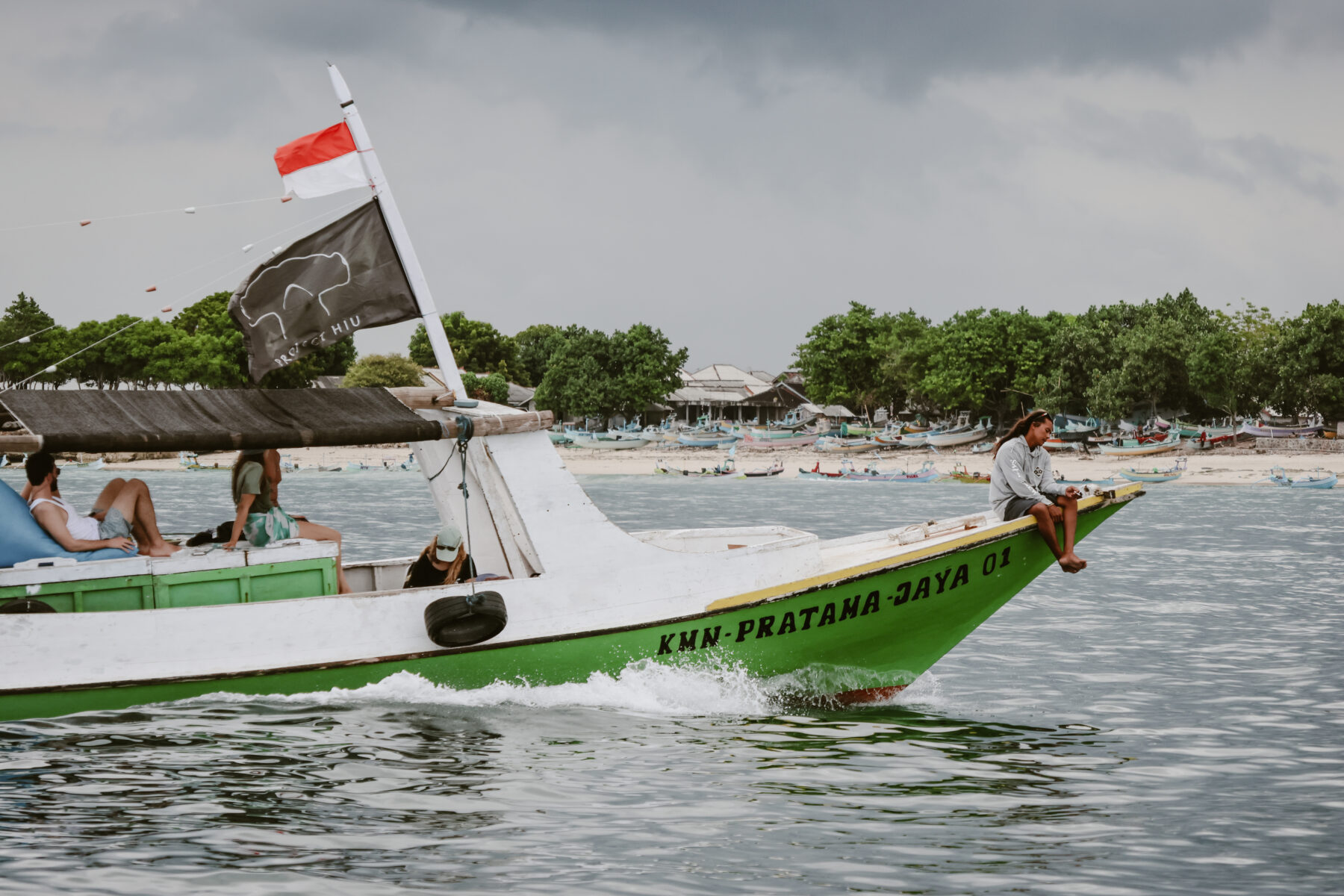
Madi estimates that each week-long trip she and her team run through Project Hiu keeps two fishing vessels out of the water for a month, saving more than 60 sharks from being caught. Through Project Hiu, she has also recently opened a permanent shop in the Lombok town of Kuta, so visitors to the island can book daytrips on the shark-fishing boats. “This is perhaps one of our greatest steps,” Madi says. “It gives all visitors to Lombok an opportunity to participate in Project Hiu and be part of the solution, supporting and saving our oceans.”
Throughout my week-long travels with Project Hiu, I sit and drink tea with the men who would otherwise be out risking their lives to catch sharks. I snorkel the beautiful reefs surrounding Lombok and share laughter, stories, singing, dancing and arm wrestles with the crew. It’s frightening to hear Captain Odi’s story of his brother Manane, who nearly died recently when a 300kg hammerhead ripped the fishing line out of his hand, hooking his finger and dragging him deep underwater. Manane shows us his scar. “My brother was dead,” Odi says, solemnly. “The hook snared him, and he was dragged underwater. He was not responsive and not breathing. We had to give him CPR. It’s a miracle he’s alive.”
“Shark fishing is very dangerous,” Manane tells me in broken English. “Very, very dangerous.”
Each week-long trip keeps two fishing vessels out of the water for a month, saving more than 60 sharks.
Madison Stewart
I am privileged to be present when Manane’s son Habil Pratama signs a contract with Project Hiu that will allow him to go to university at the beginning of August 2023. Habil’s grin runs from ear to ear and his parents are delighted. They don’t want their son risking his life while fishing for sharks.
Project Hiu raises funding to offer university scholarships to young men from the fishing villages who would otherwise go on to become part of the next generation of Indonesian shark fishermen. “We are doing all that we can to educate the next generation of shark fishermen – showing them alternative ways to feed their families and ensuring this learning is available to them,” Madi says. “These degrees will give them alternatives to shark fishing. It will open new horizons and give them options, and the understanding that their reefs and their sharks are much more valuable alive than dead.”
Project Hiu provides scholarship recipients with a laptop, covers their transport to and from school, and pays their tuition fees for a degree in hospitality and tourism. “Project Hiu will offer them a job when they graduate, but they don’t have to take it; they will be free to choose their own pathway,” Madi says.
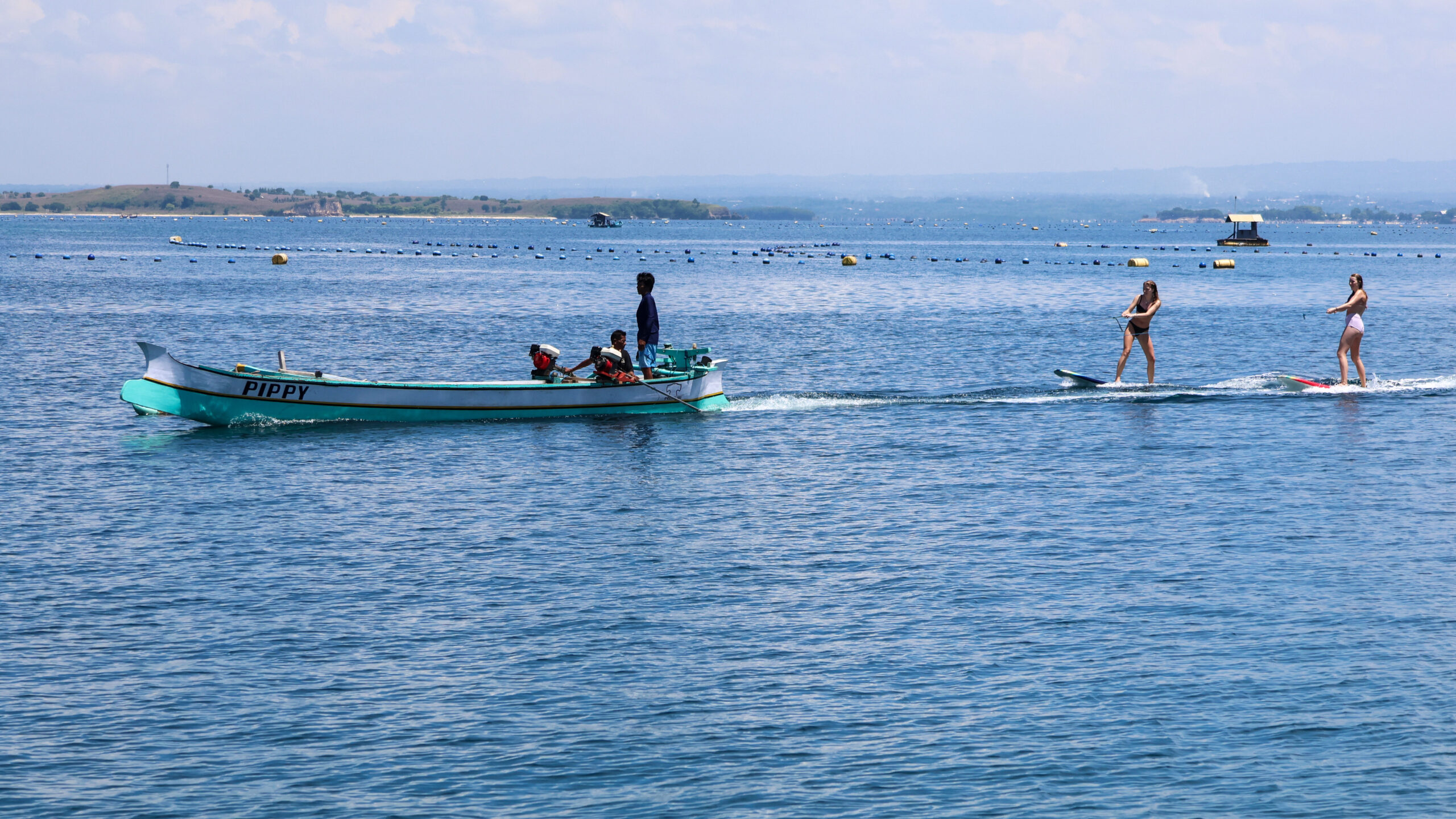
On Gili Maringkik, Project Hiu also supports childhood education. It’s uplifting to see firsthand the improvements and effects of Project Hiu filtering back into the community. Instead of seeing shark carcasses being carried along the pathways on poles, I witness boxes of new air-conditioning units arriving – a Project Hiu initiative to make learning more comfortable for children on the island. New English books and textbooks are also delivered. “By contributing to their education, we can ensure the children don’t fall into these dangerous and declining generational occupations, but have other options,” Madi says.
In one of the classrooms, talented artist Naomi Sharp, a previous tour participant, has returned to beautify the school walls with murals of highly decorated sea animals for the children’s enjoyment.
“The residents of [Gili Maringkik] have been brought up with a pretty negative association with sharks,” Naomi says, balancing her colour palette on a ladder. “They kill them to make a living. So I want to make my murals of sharks beautiful. I want the children to love their sea creatures and care for them. Making them gorgeous on the walls of these classrooms can only instil a more positive association with them.”
This sentiment is at the very heart of Project Hiu. “I want this beautiful place to be known and established as a stunning marine environment,” Madi says with pride.
“I want people to visit Lombok in the knowledge that they can save sharks in the process, and, ultimately, this will benefit entire communities – not just sharks, not just the fishermen…but entire communities.”
For more info and upcoming trip dates, visit projecthiu.com
You can also book a day tour with Project Hiu from their shop in Kuta, on the island of Lombok.
